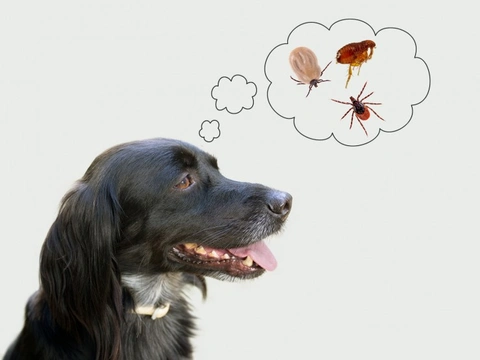
What’s biting - Seven biting and stinging insects that may target your dog
During the summer, most of us that spend a lot of time outdoors are likely to be targeted by biting bugs at some point, which can deliver a nasty first wound that then remains itchy and irritating for several days to come. Some people seem to be a much greater target for biting bugs than others, and may attain several bites from an unknown attacker while someone else sitting nearby escapes unscathed!
Bites, stings and other annoying bugs may also target your dog as well, and because of the thickness of your dog’s fur, you may not even realise until you witness your dog scratching themselves to distraction!
In this article, we will look at seven different biting bugs and insects that may target your dog during the summer months. Read on to learn more.
Preventing bug bites
Because bug bites can be painful and irritating and because your dog is not likely to be very good about leaving an itchy area alone, it is wise to take what steps you can to prevent them becoming the next meal for something nasty in the first place! While not all biting and stinging bugs can be repelled successfully, certain topical products and specially designed collars that are impregnated with bug repellent can help to make your dog’s life easier in the summer.
It is also important to remember that some biting bugs and insects spread diseases too, and to monitor the site of any bites carefully until they are fully healed.
Fleas
All dog owners are familiar with fleas, which can infest dogs easily if they are not protected with a good flea treatment agent. The saliva of fleas is often irritating to dogs, and so when a flea bites them, this can lead to either a localised or systemic allergic response to the bite, as well as swelling and redness in the area of the bite itself. While fleas are present in the environment all year round, they tend to be much more prolific in the summer months!
Ticks
While ticks are not quite as common as fleas, they do tend to be prolific in certain areas of the country and at certain times of the year, infest certain areas where dogs tend to congregate.
Tick bites are usually identifiable by the presence of the tick itself latched onto your dog’s skin, and ticks need to be removed carefully to avoid breaking off the head. Ticks can also spread diseases, and so monitoring tick bites carefully is important.
Find out more about ticks and how to remove them safely in this article.
Mosquitoes
While here in the UK, malaria mosquitoes are not a threat, we still have several species of these slow-flying, biting menaces that can inflict a painful sore that is extremely itchy, and highly likely to bother your dog!
Mosquito bites tend to become itchy very quickly, and appear as a raised bump surrounded by an area of redness, which can be exacerbated by scratching. While mosquito bites from UK species are not dangerous to dogs, the itching and irritation that they create can lead to sore or broken skin, which may then be at risk of infection.
Mites
Dogs can contract a variety of different types of mite infestations, such as ear mites and mange mites, although neither of these are season-specific. Mites are microscopic bugs that burrow under the surface of the skin to feed, leading to inflammation and severe itching. Mite infestations can lead to hair loss, lesions on the skin and inflammations of the skin, and will require a veterinary-approved parasitic agent to resolve.
Mites are transmitted from dog to dog with ease, and so any dog can potentially pick up mites in the dog park or by coming into contact with other canines.
Bees
Bee stings can be potentially serious for dogs, as a significant amount of dogs suffer from a pronounced reaction to being stung, which may be systemic and lead to anaphylactic shock.
The sting of the bee itself is painful, and your dog’s first reaction to being stung is likely to paw or scratch at the affected area, which often serves to inject more venom from the venom sack into the skin. Areas stung by bees will often swell significantly, and even if your dog does not have a systemic reaction to the sting, you should ensure that the swelling does not obstruct their breathing or cause any other problems.
You should monitor your dog carefully for a bad reaction if they are stung by a bee, and if you know that your dog is sensitive to bee stings, your vet may recommend carrying an antihistamine medication with you so that you can administer this to your dog if you need to.
Wasps
Wasp stings are also rather nasty, and unlike bees, which can only sting once, wasps may stick around and deliver multiple stings to your dog after their initial attack!
While fewer dogs are hypersensitive to wasp stings than they are to bee stings, an anaphylactic response may potentially occur nonetheless, and this is something you should monitor for carefully.
In the area of the sting itself, expect pain, itching and inflammation, which may be very distressing for your dog.
Horseflies
Horseflies are a real pain in the summer, and these large, aggressive insects will often stealthily deliver a bite to yourself or your dog before you realise what it happening! The effects of a horsefly bite to your dog are likely to include pain, swelling and itching, although the effects are almost always localised only.



